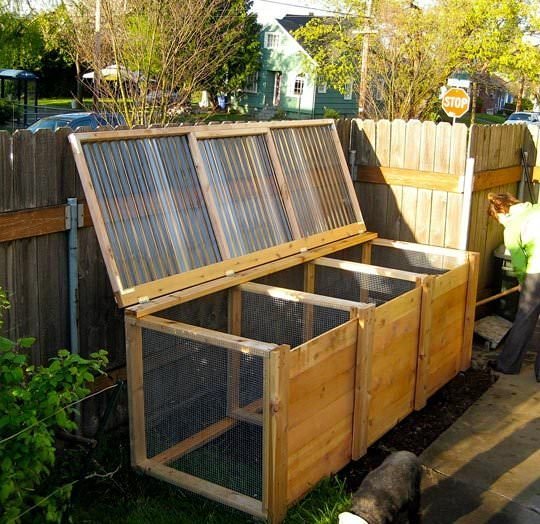How to Make Your Own Indoor Compost Bin
The number of benefits for having compost in your garden isn’t small but instead, it’s basically the cat’s meow of gardening add-ons. Compost can improve not only the quality of your flowers and vegetables but also increase their longevity while nourishing the soil for years to come.
The biggest problem with compost can be the smell though. It is technically decaying items and items that are broken down to fermented into nutrients for the beds. This can cause quite the stench when the compost pile isn’t taken care of properly.
This stench can be even worse when the winter months come and instead of creating your compost pile outdoors; it is moved into your house. That is why you need a proper indoor compost bin; not an outdoor model.
While you can always buy an indoor compost bin (to find out the best ones, click here); sometimes is good on the wallet and on the mind to get crafty and build your own! That is where this article comes into play – how to make your own indoor compost bin.
Why Composting is Important
Before building your own compost bin; it is important to know exactly why you should compost recyclable material around your house for your gardens.
Compost can help achieve the following:
● It’s chock full of nutrients and vitamins that plants require to grow healthy and strong
● It’s a natural fertilizer that is free from harmful additives or chemicals
● It can provide a barrier between the soil and possible contamination
● It’s a barrier against changing temperatures and wind speeds
● It reduces the number of weeds that can be found in your garden beds.
● Reduces the number of pests that may attack the plants (both the leaves and the stems)
● It cuts down on the amount of garbage or recycling that you have to throw out each week in your pickup
Compost has a lot of benefits, but it can be smelly, which unfortunately, is one of the biggest determinants for gardeners who want to have a steady supply on hand. That is why a compost bin is the best thing to have for storage and it also keeps it away from pests or critters looking for a lunch!
Building Your Own Compost Bin for Indoor Use
Before beginning the building process – you’ll need to have the following materials on hand:
1. An airtight container that the compost will be stored in. The size is entirely up to you and
can be as big or small as you like.
2. A nail and hammer for creating the air holes.
3. A tray or spillage container that the compost bin should fit snugly in with room for
spillage.
4. A small soil source.
5. A soil scoop.
Once all the materials for the compost bin has been gathered – it’s time to start the building process. Choose the area that will house your compost bin and make sure it fits there before starting any work.
Once the area is chosen, you need to construct your compost bin out of
wooden crates or it using a plastic container – make sure that the lid fits tightly without leaking.
Use the nail and hammer (or a drill if it’s a wooden crate) to make air holes in the top lid. Don’t make too many as this will allow for too much air flow but instead make them about two to three inches apart. To improve allover air flow, make a circle of air holes around the rim of the container as well.
Line the bottom of the container (once it’s fitted into its spillage tray) with about five inches of dry, fresh soil. Once this is fully covering the bottom of the container, add in a layer of fresh newspaper to prevent decaying smells from escaping.
Each time you add something into your compost bin (eggshells, coffee grounds, vegetable peelings, etc.); add in a handful of soil after some newspaper to keep the smell at bay.
Remember to sift through your compost pile on a weekly basis (minimum) to allow for the mixture to dry and crumble. Once the mixture is dry and crumbly, it is ready to go on your garden beds to nourish the soil and encourage plants to grow to their full potential!
Conclusion
Just because the winter months are upon you and the normal spot you would create your yearly compost pile is covered in snow; that doesn’t mean you have to give up composting and instead start throwing away items that could be used. It just means that you have to choose a new,
temporarily location for your pile.
This could have the added bonus of being available if you are currently starting your seeds for the upcoming planting season within the home or you use hanging garden baskets for small fruits, vegetables or herbs. The compost pile is always nearby and easily accessible!
So, don’t be discouraged by the cold weather and instead get crafty. Once your compost bin is built, why not ask your children to decorate it and become part of the process? It’s the perfect arts and crafts project for that stormy snow day when they are home from school!
